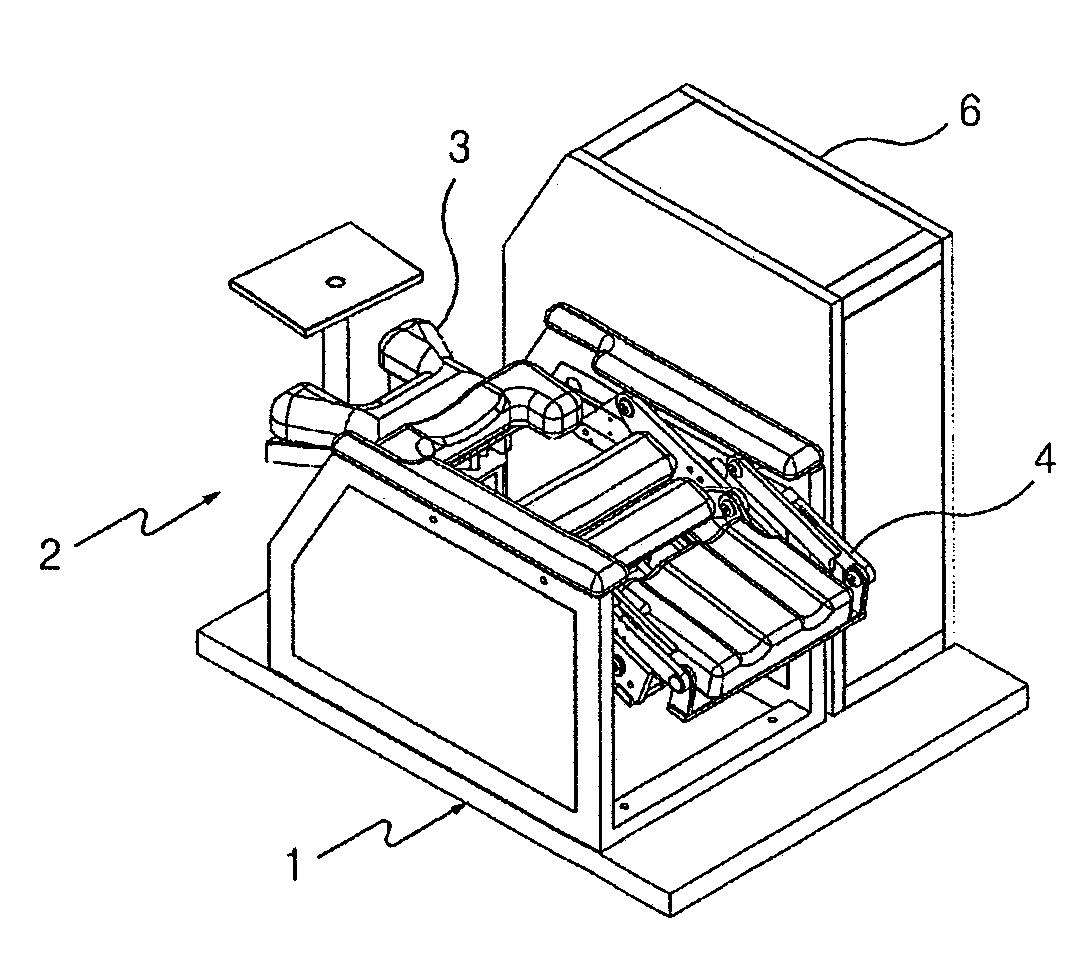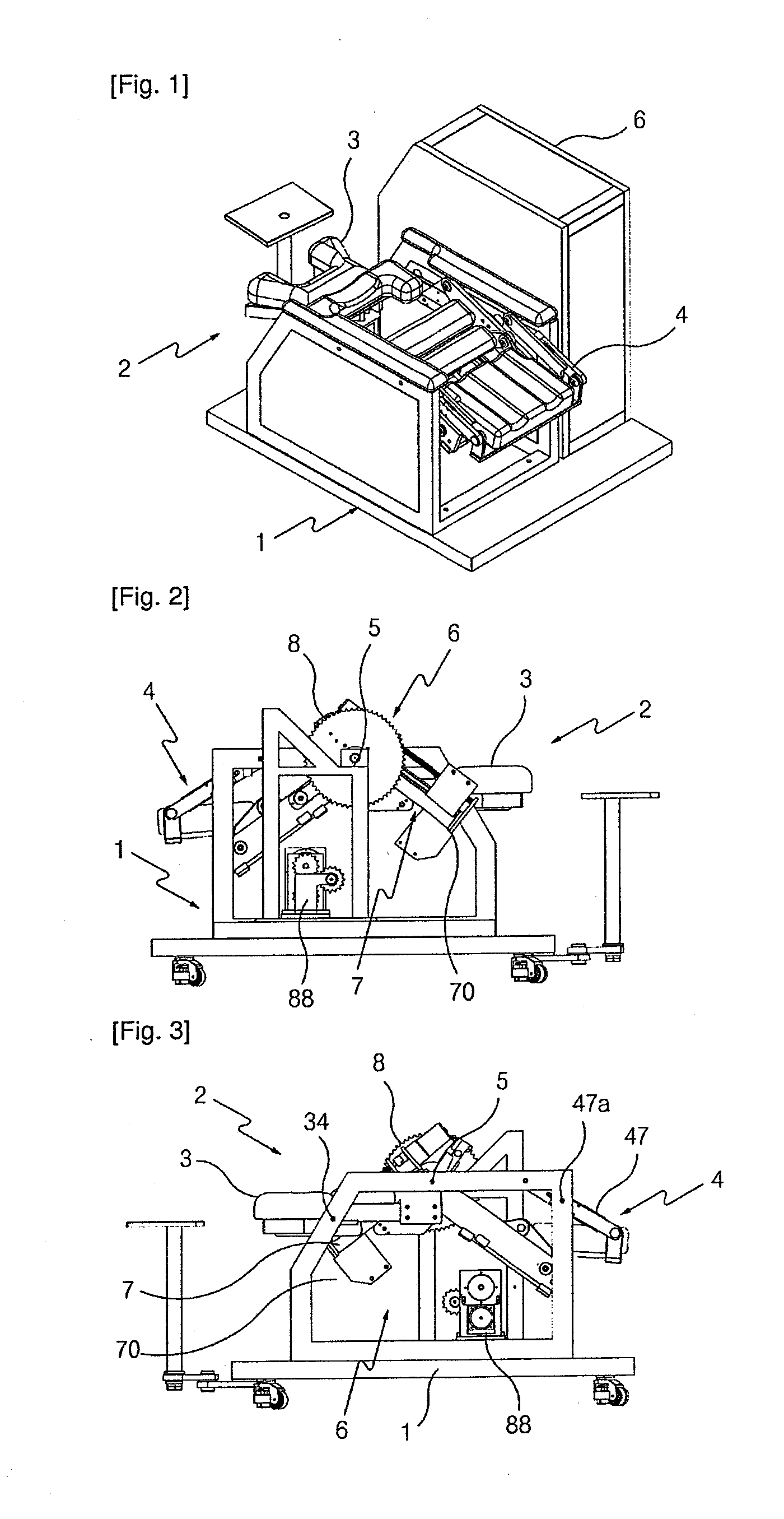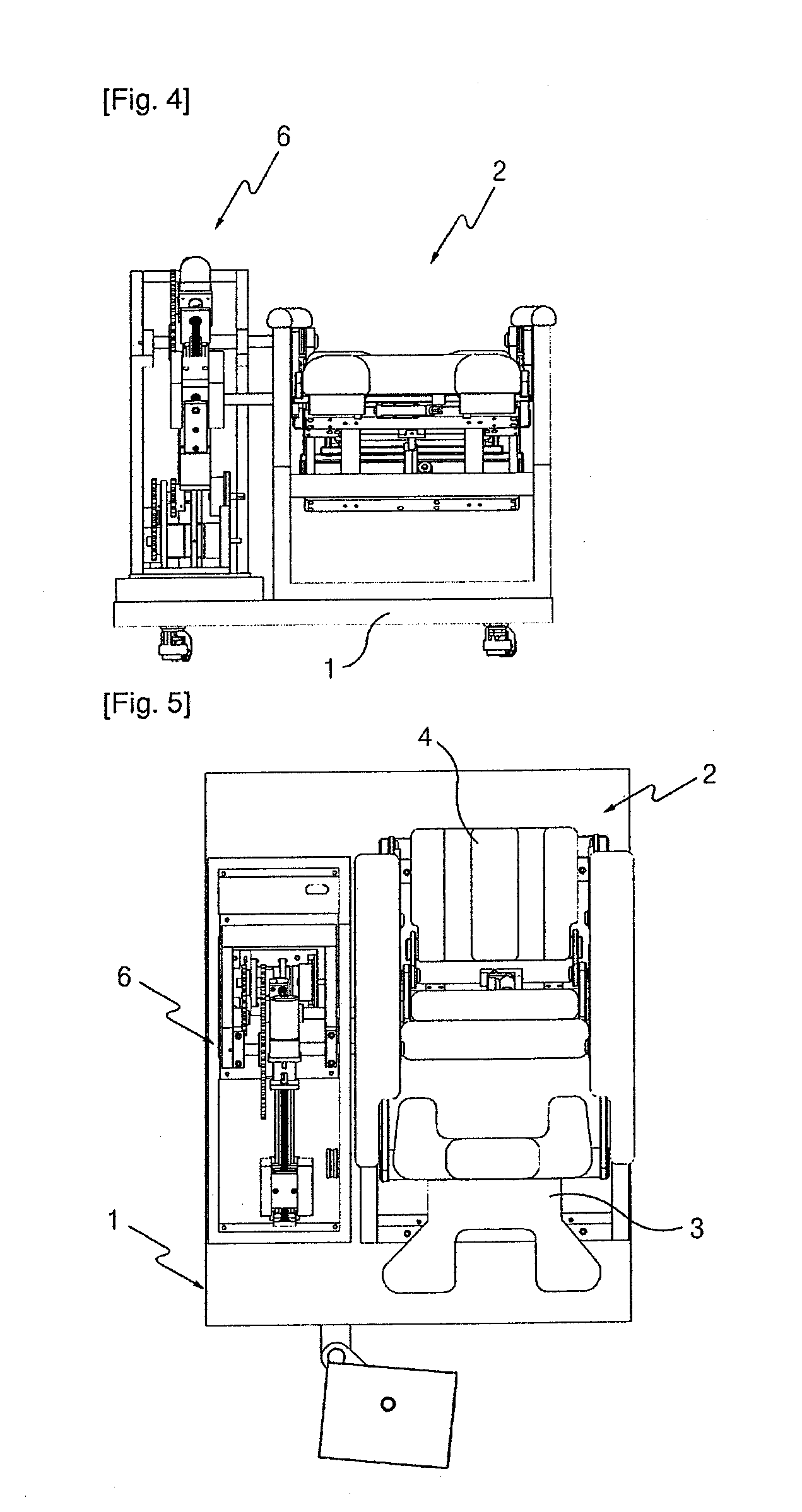However, regressive diseases due to lack of exercise continue to grow rapidly, with the result that geriatric diseases are emerging as a serious social problem.
Most of the regressive diseases due to lack of exercise are permanent and are accompanied by pain and a serious disorder.
As normal
human behavior becomes inconvenient and people become weak,
immunity and resistance to diseases are deteriorated, and therefore, people are exposed to various kinds of diseases.
As a result, enormous
medical expenses are required, which becomes a burden on welfare finance and medical insurance finance.
This indicates that women are not overcoming diseases due to lack of exercise and have not found measures to deal with such diseases yet.
On the other hand, women suffer deep and continuous pain due to lumbago.
Also, fracture and
necrosis of a hip joint, urinal incontinence, anal prolapse, and loss of sex drive are seen in women due to lack of exercise.
The reason why women are easily exposed to diseases due to lack of exercise unlike men is that women have a weak basic
physical strength, and, in addition, they become weaker due to a life cycle including
pregnancy, birth, and
menopause and due to a long period of lack of exercise.
Also, the fact that approximately 90% of the pain patients are women vividly shows that women do not overcome a physical disorder due to lack of exercise.
Therefore, women's diseases due to lack of exercise are more urgent than any other diseases, and women's diseases due to lack of exercise are a present problem which modern
medical science must urgently solve.
On the other hand, the pelvis of a
human being is configured in a straight shape in which a pelvic outlet is directed downward, and therefore,
pregnancy is very unstable.
Therefore, pelvis
weakness is a major cause of behavior inconvenience.
As can be easily understood from the above description, muscles and ligaments of women's pelvis are soft and weak, and, in addition, the pelvis is weaker due to lack of exercise.
Therefore, a problem due to lack of exercise is more serious.
Hip joints frequently suffer a fracture due to collision between an upper body load action and a reaction of the feet.
Since people do not pay deep attention to exercise on the grounds that lack of exercise is a problem which people must personally solve, there are some misunderstandings and many secrets.
However, there is no detailed description as to which portion of a
human body is to be exercised and how and why the human body is to be exercised, and there is no scientific support.
Therefore, it is insisted that a problem related to lack of exercise cannot be caused.
When ligaments, muscles, and disc tissues become loose and degenerate, therefore, the pelvis and the waist supporting the weight of the
human being do not endure weight pressure in which the pelvis and the waist are pulled, rubbed, and pressed, with the result that the
human being suffers pains in the pelvis and the waist, and the pelvis and the waist are injured.
Therefore, regressive diseases due to lack of exercise are a physical phenomenon occurring as a result of weak waist and pelvis not supporting
body weight.
When lifting a
heavy load, the waist is more dangerous.
As is proved by a fact that
osteoporosis intensively occurring at the leg bones and the inguinal bones to which the psoas major muscles are connected, regression due to lack of exercise results in
weakness of the pelvis and the waist due to lack of hip joint exercise.
Therefore, it seems that the framework of the human being is very unstable.
However, the waist, the abdominal region, and the pelvis, which support the upper body, have a large weight burden.
Therefore, the waist, the abdominal region, and the pelvis need to be exercised but are not easily exercised.
Since the waist, the abdominal region, and the pelvis have little exercise effect, it is difficult to produce good results in a short period of time.
In addition, it is impossible for patients, women, and the old and the weak to exercise the waist, the abdominal region, and the pelvis.
The fat that pain patients whose behaviors are inconvenient due to geriatric diseases go on rapid growing every hospital and the fact that there are many medicines and
medicine administration methods prove that there is no proper and precise method of treatment.
However, the disclosed exercise apparatuses are disadvantageous in that a large amount force is initially required to perform waist exercise, whereby it is difficult for women or the old and the weak capable of exerting relatively small force to use the exercise apparatuses, and, particularly, the exercise apparatuses are not suitable for strengthening and rehabilitation treatment.
The pelvis, the waist, the back, and the shoulders have little exercise effect through ordinary exercise, and there are no methods suitable for women or the old and the weak.
In this method, however, weight exercise is not possible because the waist joint is the symmetrical middle between the upper body and the
lower body, and therefore, one of the upper and lower bodies is strained when exercise resistance is applied to the other.
Also, upper body muscles, such as the neck and the shoulders, are strained, although exercise without
exercise equipment is performed, and therefore, it is difficult to continuously perform such exercise without
exercise equipment.
For this reason, it is necessary to fix the pelvis using physical force equivalent to 5 times exercise torque, which is not substantially possible.
Furthermore, the front part of the pelvis is buried in the inguinal muscles in a sitting position, with the result that it is not possible to fix the pelvis.
During waist exercise, however, force is applied even to the footstool, and the front part of the pelvis is opened, with the result that the movement of the pelvis is caused.
That is, repulsive force is substantially applied to the footstool during waist exercise.
Also, errors may be caused during the execution of a
back muscle test.
However, it is difficult to apply fixing pressure sufficient to fix the pelvis, with the result that the disclosed method is limited in selecting various exercise loads.
Therefore, it is not easy for patients as well as the old and the weak to use this method.
Also, it is difficult to select exercise loads suitable for individual users.
In addition, it is not possible to solve a problem caused due to lack of body exercise although a problem related to the waist exercise is solved.
 Login to View More
Login to View More  Login to View More
Login to View More 


